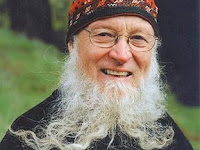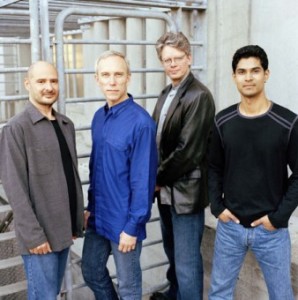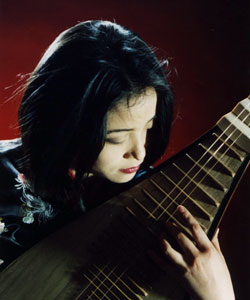 |
| Terry Riley |
I have always been a big fan of Terry Riley. I still have my original 1964 vinyl pressing of his In C, which burst on the classical music scene like a revelation — minimalist, aleatoric, melodic, haunting. His musical trajectory has carried him beyond minimalism to a sometimes startling eclecticism, but all his music is shimmering, luminescent, and beautiful. My teacher don Roberto Acho spoke of the singing of the plants as being puro sonido, pure sound; Riley writes, in the same sense, pure music.
 |
| The Kronos Quartet |
Riley’s latest work is The Cusp of Magic, a string quartet commisioned by the Kronos Quartet, his long-time collaborators, in celebration of his seventieth birthday. The work showcases his sonic eclecticism, employing the sound of children’s toys, peyote rattles, synthesizer, drums, and the instrumental and vocal talents of Wu Man, master of the Chinese pipa, a type of lute. Riley said that, above all, he wanted the piece to be, as he put it, magical. And, indeed, the work takes its title from the summer solstice, and represents all those moments of transition when the world becomes filled with possibility, miraculous, like Riley’s music itself, in which, all at once, there is the inimitable sound of a rubber duck.
“It was in my mind all the time,” Riley explains, “to have layers in this piece that had different realities and that can be perceived in different ways.” He based the opening and closing movements of his quartet on the peyote ceremonies of the Native American Church — an attempt to capture, in his own idiom, the all-night ceremonies of prayer, songs, and meditation, which themselves live on the threshold of the magical world.
 |
| Wu Man with pipa |
The first section of the work, entitled The Cusp of Magic, inspired by the peyote ceremony, is built on a rhythmically shifting pulse of drum and rattle; the final section, entitled Prayer Circle, returns to the peyote ritual pulse, now without drum and rattle, weaving together the pipa with the string quartet. The Kronos Quartet’s violinist David Harrington has said that this section is “one of the great movements that Terry’s ever written, and the propulsion that it gets to at the end, you feel like the piece is bounding with joy. The level of variety in feelings and emotions has rarely been equaled, including really thoughtful considerations about the world that we’re all a part of right now, about what we’re all facing in the future.”
Riley has participated in peyote ceremonies, and he intended this section to take the listener similarly from dark to dawn. In a peyote ceremony, each participant contributes a unique song, and all the voices combine to create, through the sacred night, a coherent and transformative experience. Here is how Riley, in the final section of Cusp, presents that ceremony:
The Cusp of Magic by Terry Riley
Riley says that peyote ceremonies are no longer part of his life. He still keeps sacred plants in his garden, he says, given to him by an Oklahoma medicine man; but they are not there to be ingested. “The plants absorb the music,” he explains, “and I absorb their vibes.” Reviews of The Cusp of Magic are here, here, here, and here.

- Previous Post: Virotes
- Next Post: The Jungle Cookbook
- More Articles Related to: Books and Art, Sacred Plants, The Medicine Path


